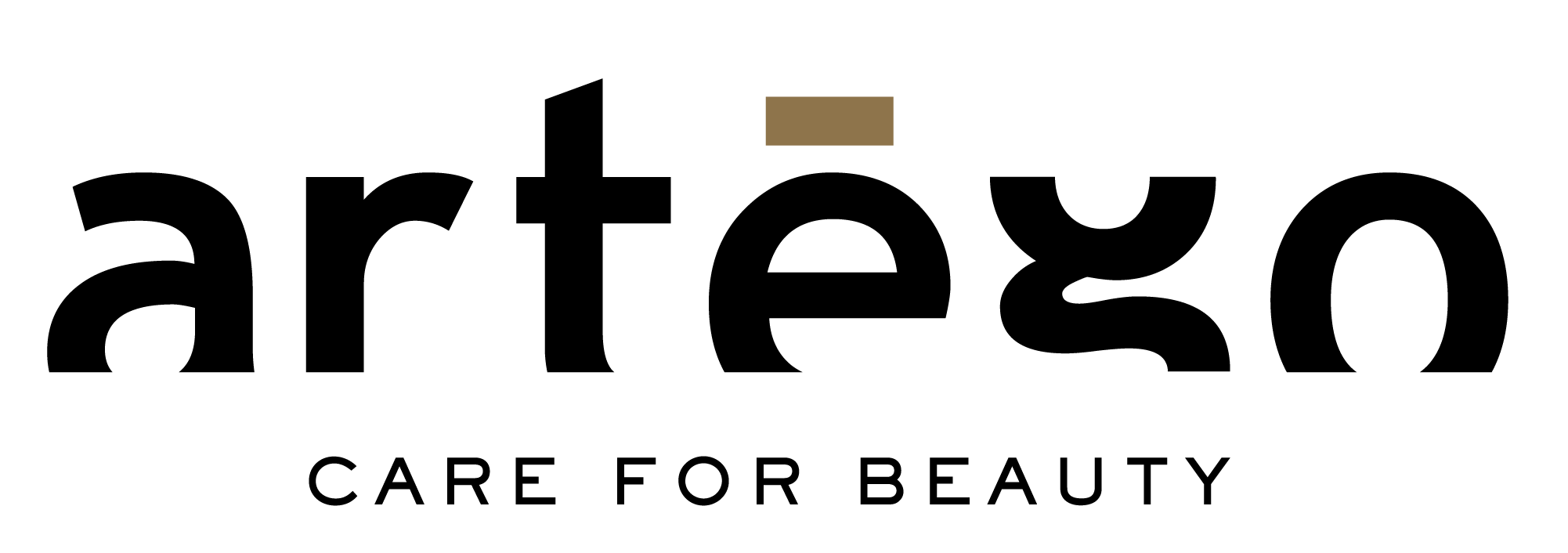Let’s get to the root of the matter: understanding the basic structures and features of hair. Sometimes visible and sometimes not, growing your familiarity with the characteristics of all different types of hair is step one to getting your clients looking their very best.
The Hair Structure: Visible + Invisible
The hair is a fibrous formation mainly made up of a protein called keratin.Other elements contained in the capillary structure are:
- Water
- Carbohydrates
- Lipids
- Minerals
- Vitamins
A young and healthy person has an average quantity of 100.000 – 150.000 hair follicles. The shaft is the visible section of the hair that shows from the scalp; its shape, in a horizontal section, is more or less cylindrical.
Starting from the outside, we recognize 3 different layers:
- Cuticle
- Cortex
- Medulla
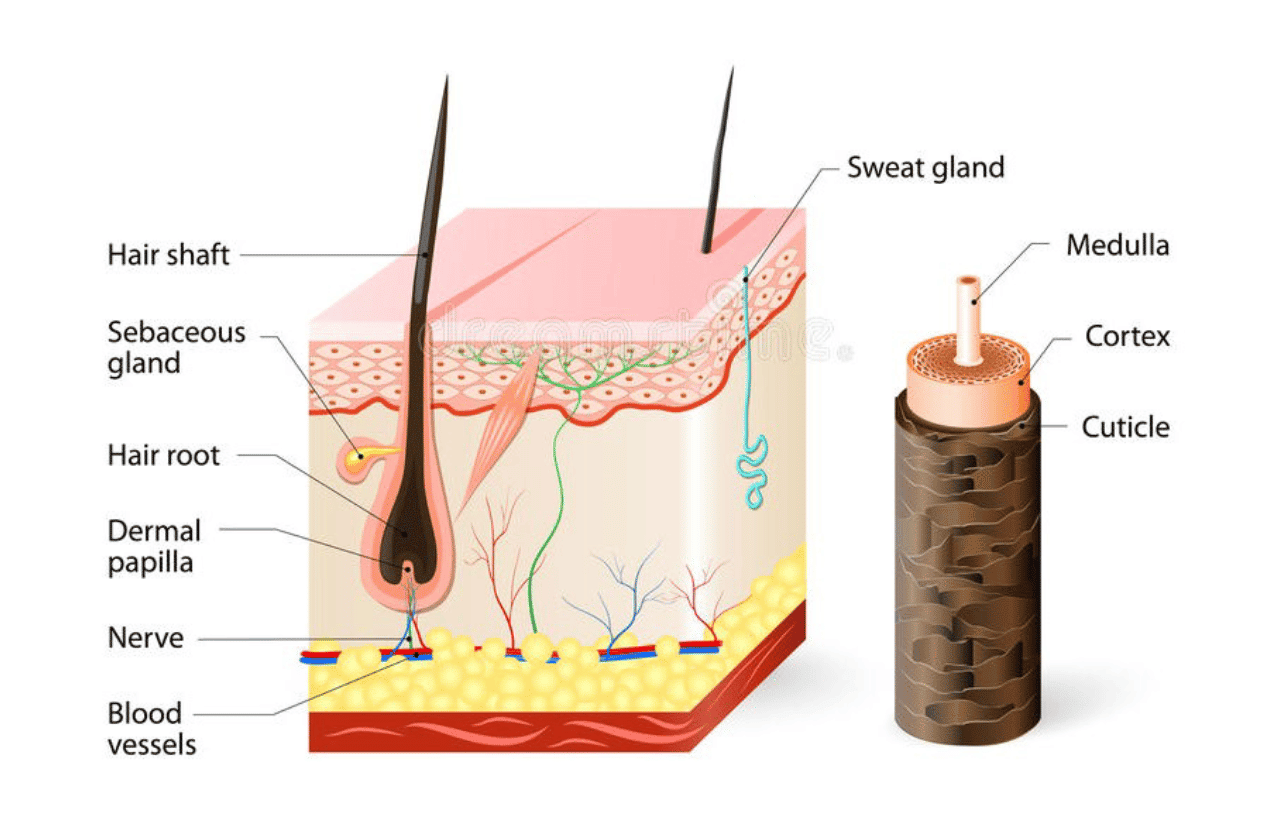
Cuticle
The cuticle is the most external layer, surrounding the hair throughout its length. It is made of transparent scales which protect the structure of the hair shaft. The cuticle is made of between 3 and 14 overlapping thin layers of translucent keratinized cells.The main feature of the cuticle is its affinity with water: it swells when absorbing (the hair thickens, gets heavier and longer) and shrinks when water is released.
Cortex
The Cortex represents 85% of the hair and consists of keratin protein fibers. These keratin fibers are made up of polypeptide chains, which are similar in form to a spiral staircase whereby all chains are parallel. Each of the chains contains 20 defined amino acids.
Some of these chains, linked between them, make up the so called “microfibrils”, which run through the length of the hair. Some of them are bonded chemically, making up the so called “macrofibrils”, that are organized in a rope with multiple ends, making up the majority of the cortex.
On the basis of their chemical nature, the bonds between the keratin chains are differentiated into very stable bonds, which melt with difficulty, and softer bonds, which are easily broken even by means of water.
Medulla
It is the more internal part of the hair shaft, similar to a tube in the center of the hair. It is made up of rounded translucent cells, and many air bubbles. The Medulla is sometimes absent in finer hair types or is sometimes interrupted throughout the hair shaft. There is actually no real need for the Medulla for hairdressing services other than to acknowledge its existence.
The portion of the hair inside the scalp is the invisible part of the hair. This is where the cells responsible for hair growth and natural color live.
It can be divided into 2 large sections: the follicle and the bulb.
Follicle
The follicle consists of a deep depression of the superficial epidermis, with a little opening towards the outside, where the visible stalk comes out. The bottom of said depression constitutes the ‘living part’ of the hair – the germinating cells (continuously dividing and growing) – directly in contact with the blood vessels (dermal papilla), from which they obtain nourishment and energy to develop and feed the hair.
Bulb
The bulb represents the portion of the hair contained inside the follicle (the one you see at the bottom of the hair if you detach it from the scalp), and it is made by a jelly material (amino acids, fats, cell residues, etc.). Inside of it, the germinating cells start transforming and specializing, resulting into two big cell families:
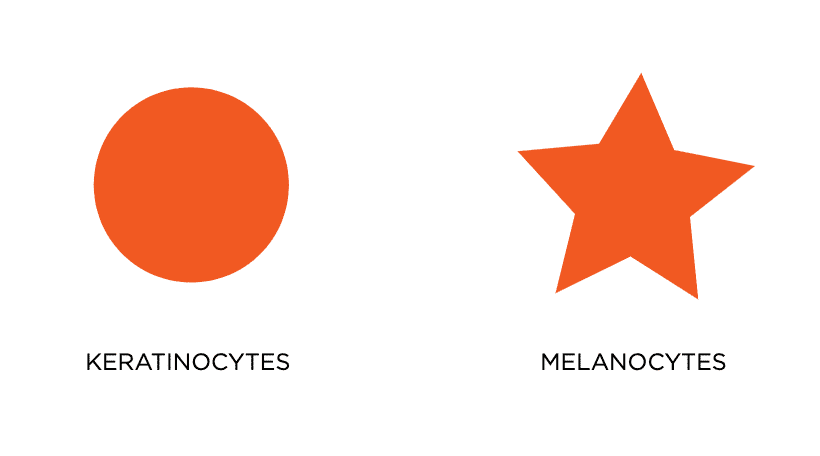
KEROTINOCYTES: “rounded shape”, they develop keratin which represents the structural protein constituting the “framework” of the hair
MELANOCYTES: “star shaped”, they produce a protein called melanin, which is responsible for the hair natural color
Natural Pigmentation: The Origin
Melanin is responsible for the hair natural color. It is produced by the bulb’s melanocytes and it can be of 2 types:
- EUMELANIN (blue / dark pigment)
- PHEOMELANIN (yellow / red pigment
When the hair is healthy, there is always a combination of this two pigments nestled in the cortex keratin fibers. The external layer of the cuticle, instead, always appears colorless and lacking melanin granules. Hence is the quantity, distribution, shape, and melanin type that modifies the numerous hair shades, which professional colorists try to modify and or recreate on a daily basis.
The first grey hair appears when there is a decrease in melanin production. Therefore physical deterioration and the general passing of time are possible factors in the melanin reduction levels.
Hair Physical Features
It is fundamental to know the hair physical features; the tactile and visual experiences allow us to differentiate 3 main characteristics:
- Porosity
- Structure
- Tenacity
Porosity
- Porosity defines the capability of the hair in absorbing or resisting water and other substances which penetrate the cuticle, as well as color’s cosmetic pigments.
- Grey hair is usually less porous, and has a tendency to be more resistant to chemical services.
- Sensitized hair (i.e. prolonged sun exposure; or use of aggressive heat sources; or inappropriate chemical treatments) is more porous.
As a general rule, the more porous the hair, the more it will retain cold cosmetic pigments, which are larger, and will release the warm pigments, which are smaller.
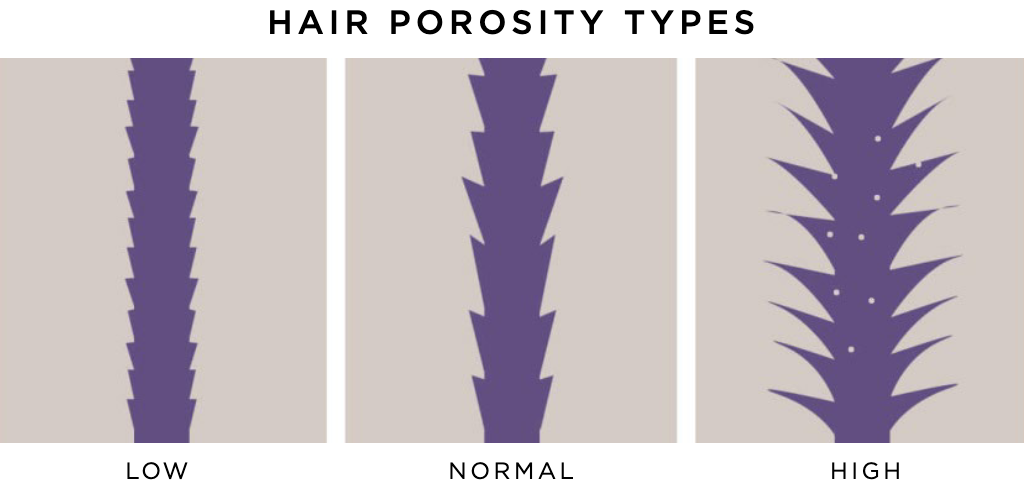
Structure
Structure represents the hair size, more or less thick. The diameter of the hair shaft can vary significantly also influenced by the individuals ethnicity. We generally divide the hair in 3 types, according to its structure:
- Thick
- Medium
- Fine
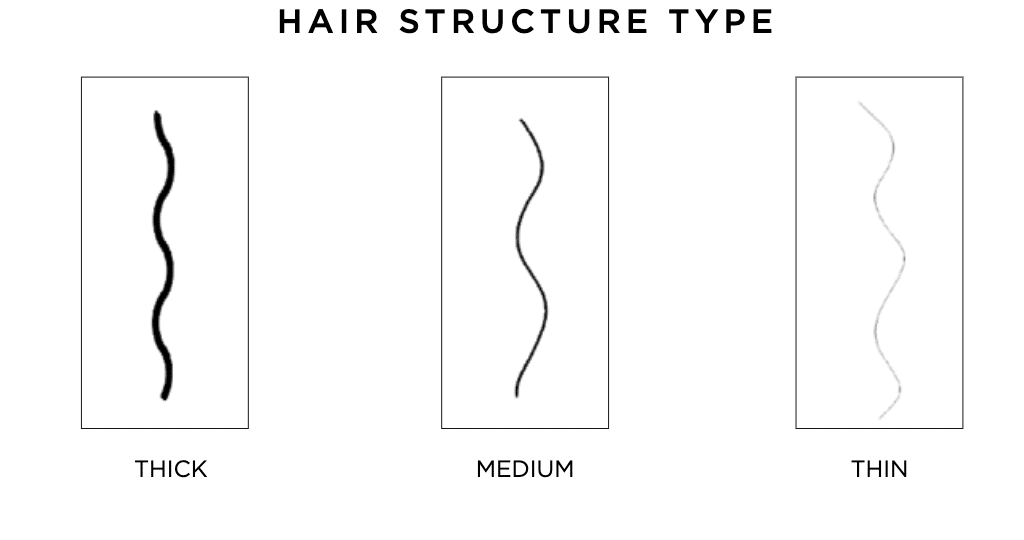
Tenacity
It’s the opposite of porosity; it suggests the difficulty in penetrating the cuticle layer for water and for hydro-soluble substances.
